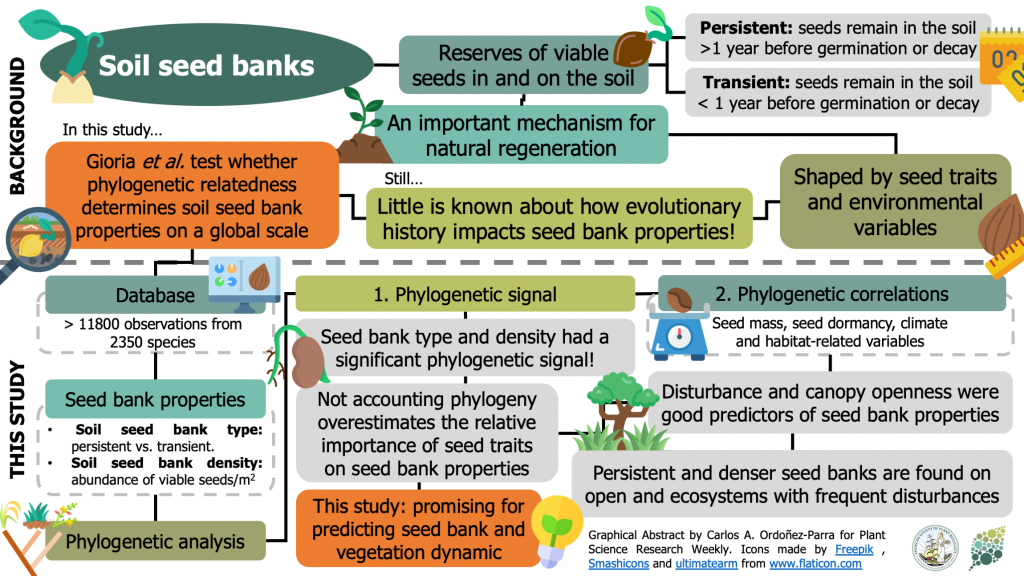
Phylogenetic relatedness mediates persistence and density of soil seed banks ($) (J. Ecol.)
Plant Science Research WeeklySoil seed banks are classified into two types, depending on how long seeds remain viable in the soil before germination or decay: transient (< 1 year) or persistent (> 1 year). In turn, a species' ability to form a persistent seed bank presumably depends on seed traits and plant habitat. However,…

Cones structure and seed traits of four species of large‐seeded pines: Adaptation to animal‐mediated dispersal (Ecol. Evol.)
Plant Science Research WeeklyDifferent studies show that animal-dispersed pines have particular cone and seed structures to match their dispersers. However, most research has either addressed the changes in cone and seed traits in a single species over an environmental gradient or the differences between wind-dispersed and animal-dispersed…
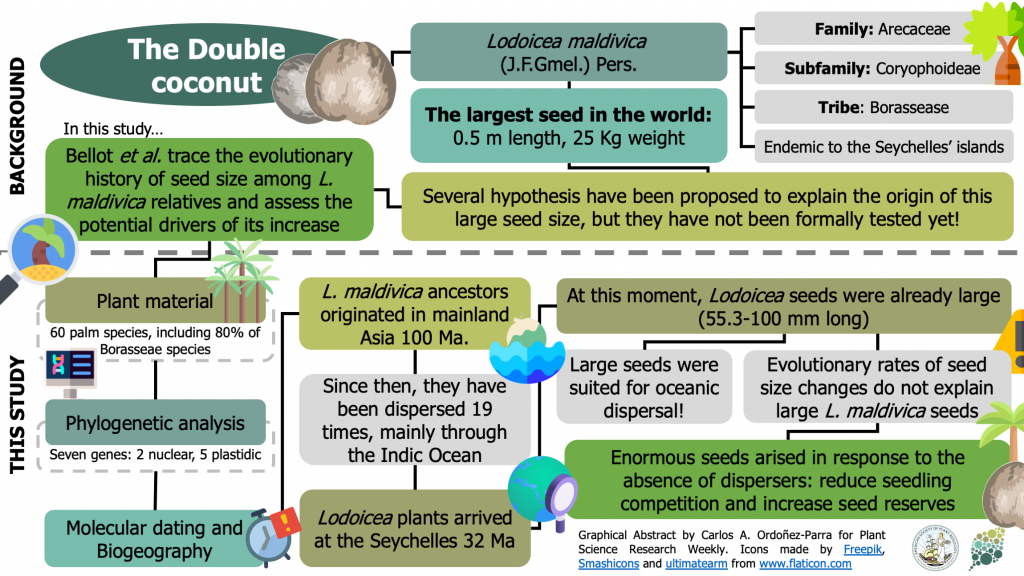
On the origin of giant seeds: the macroevolution of the double coconut (Lodoicea maldivica) and its relatives (Borasseae, Arecaceae) (New Phytol.)
Plant Science Research WeeklyThe double coconut –Lodoicea maldivica (J.F.Gmel.) Pers. (Arecaceae: Coryophoideae)– is an endemic palm from Seychelles with the largest seed in the world: 0.5 m length and 25 Kg weight. Several hypotheses have been proposed to explain the origin of this enormous seed, but they have not been formally…
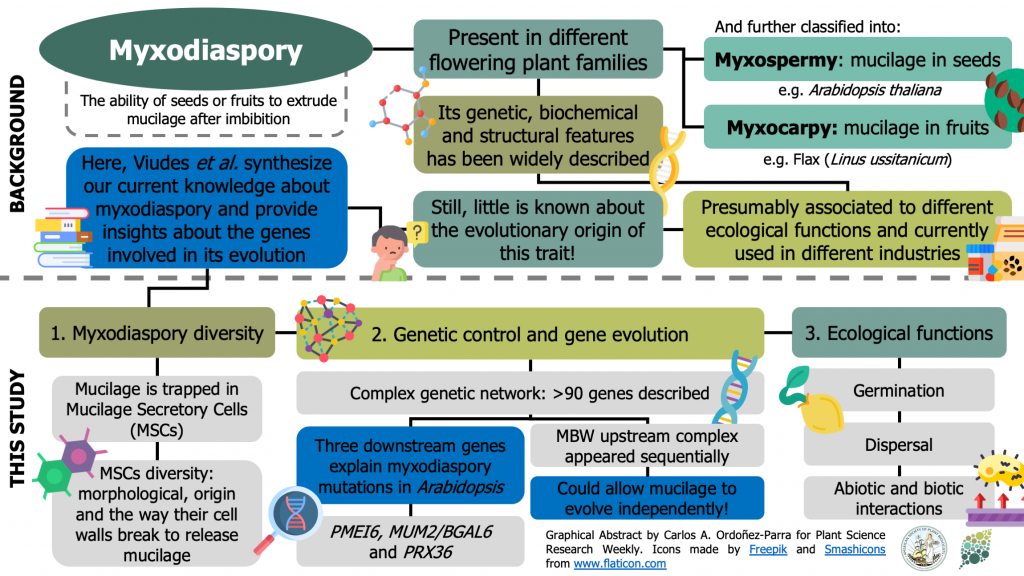
Review: Seed Mucilage Evolution: Diverse Molecular Mechanisms Generate Versatile Ecological Functions for Particular Environments ($) (Plant Cell Environ.)
Plant Science Research WeeklyPlants with myxodiaspory release mucilage upon imbibition of seeds (myxospermy, e.g., Arabidopsis thaliana) or fruits (myxocarpy, e.g., Linum usitatissimum). This ability appears in several angiosperm families, but its evolutionary origin has seldom been studied. In this review, Viudes et al. synthesize our…
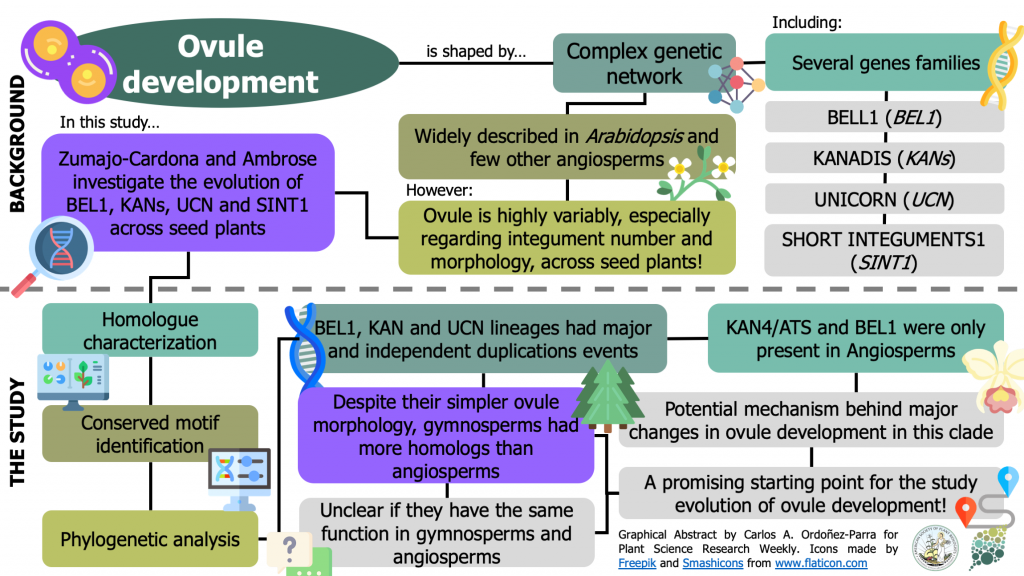
Phylogenetic analyses of key developmental genes provide insight into the complex evolution of seeds ($) (Mol. Phylogenet. Evol.)
Plant Science Research WeeklyThe complex genetic network behind the development of the ovule –the cell that will give place to seeds after fertilization– has been widely described in some model plants. However, ovules hold a high variability in integument number and morphology across seed plants. To understand the genetic mechanism…
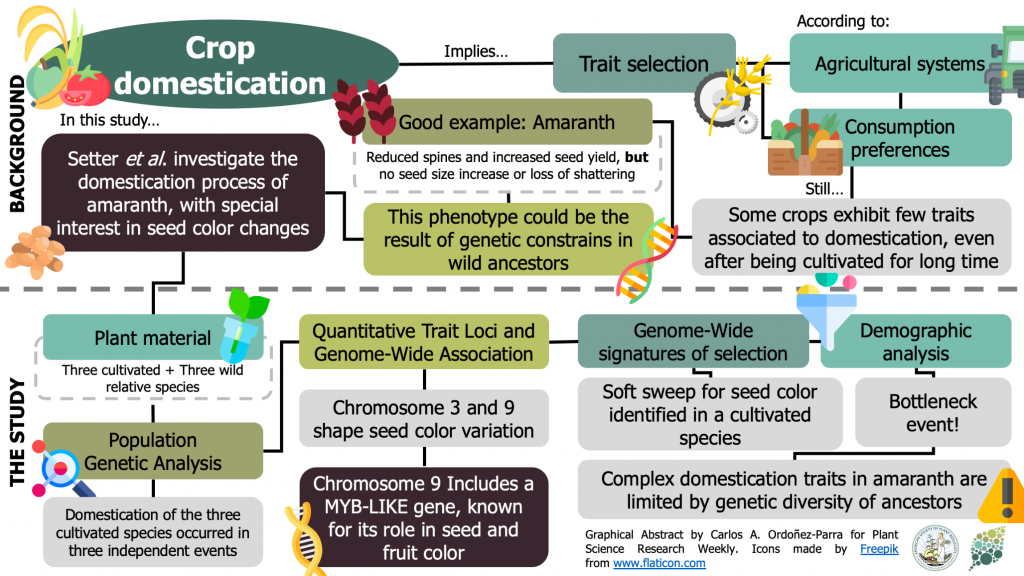
Parallel Seed Color Adaptation during Multiple Domestication Attempts of an Ancient New World Grain ($) (Mol. Biol. Evol.)
Plant Science Research WeeklyAmaranth has been cultivated in Central and South America since Pre-Columbian times. Still, it exhibits features that are unexpected in domesticated plants, such as seed shattering and reduced seed size. Here, Setter et al. dissected the genetic signature of this crop’s domestication process, with…
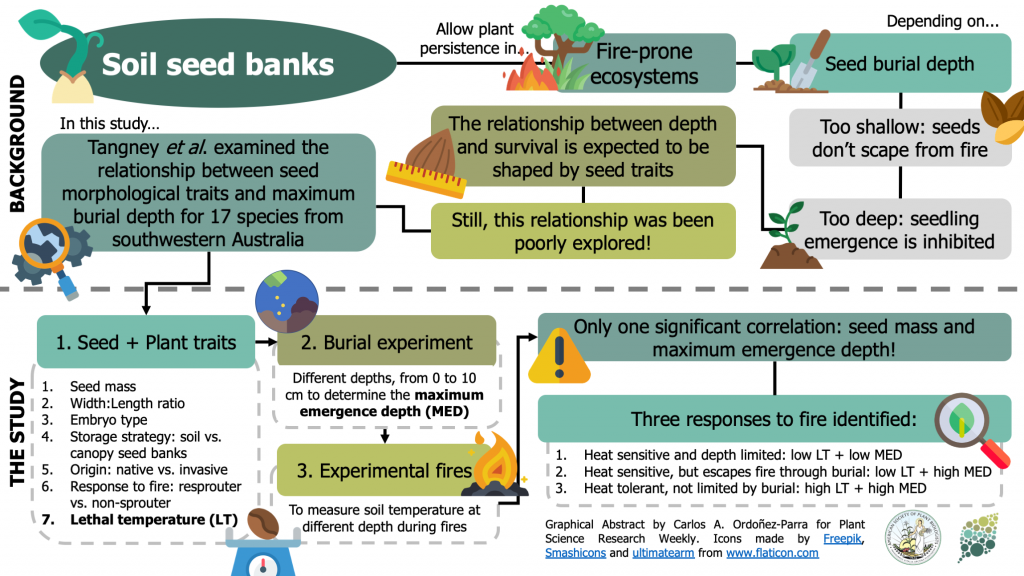
Seed traits determine species responses to fire under varying soil heating scenarios ($) (Funct. Ecol.)
Plant Science Research WeeklySoil seed banks allow plants to persist in fire-prone ecosystems. However, if seeds are buried too deep, seedling emergence can be inhibited. The maximum depth at which seeds can be buried without hampering recruitment is expected to be shaped by different seed traits, although this has been seldom tested.…
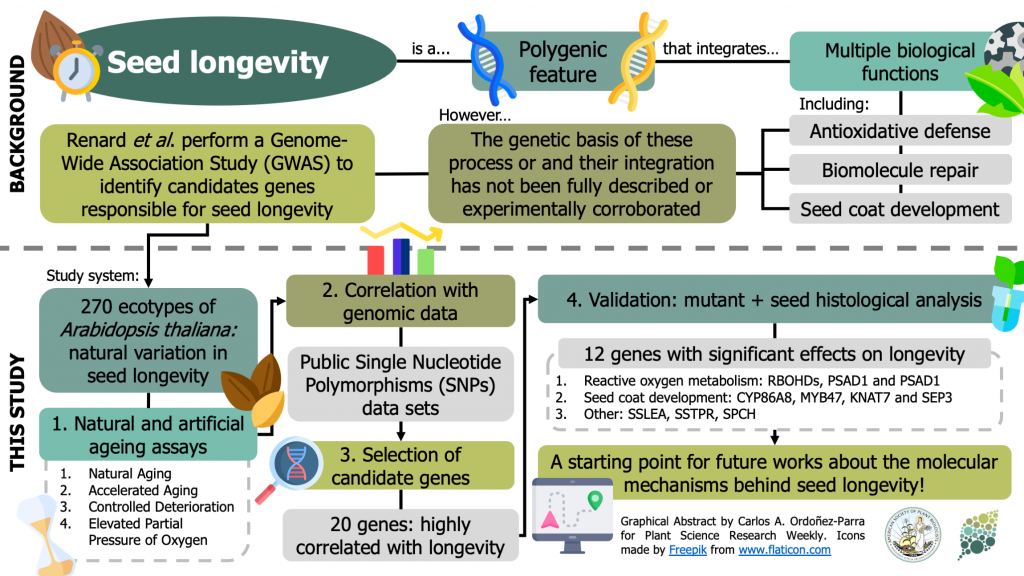
Identification of novel seed longevity genes by GWAS and reverse genetics (Plant Cell Environ.)
Plant Science Research WeeklySeed longevity (i.e., the inherent lifespan of a seed) is a polygenic feature that demands the coordination of multiple biological processes, and that shapes the persistence of seeds in the soil and the time they can be stored ex situ. Recent studies on this trait highlight the role of the antioxidant…
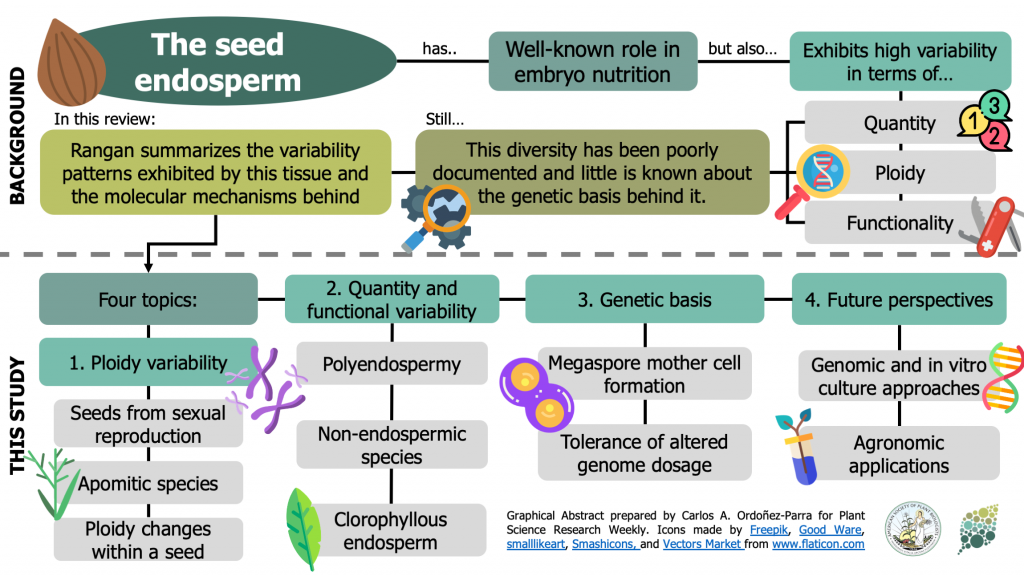
Review. Endosperm variability: From endoreduplication within a seed to higher ploidy across species, and its competence ($) (Seed Sci. Res.)
Plant Science Research WeeklyIn addition to its well-known nutritive function, the endosperm of seeds has a great deal of morphological, genomic and functional diversity. In this review, Rangan summarizes endosperm variability and the molecular mechanisms behind it. Although classically described as being triploid (2n from the mother…

